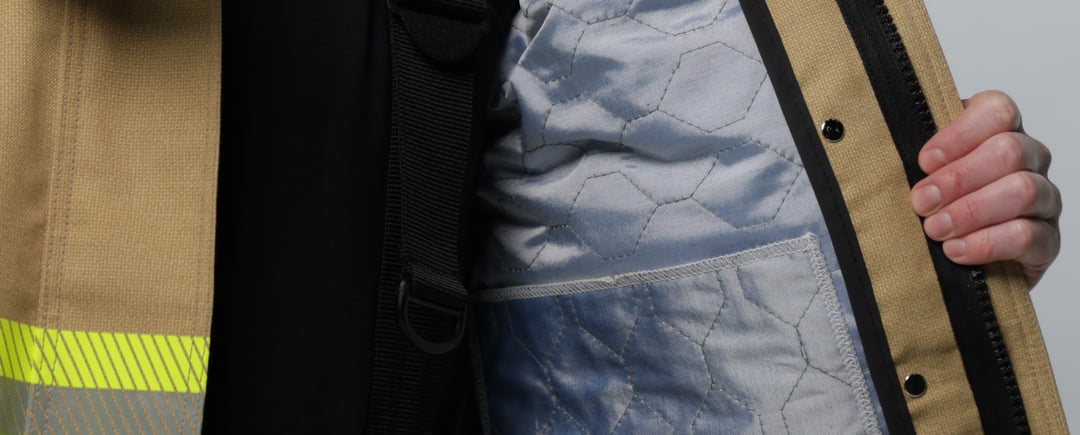Fire suits consist of several layers of protection. When selecting the right materials for your fire suit, it’s undoubtedly helpful to understand exactly what each layer contributes to the suit, and the current trends surrounding them. In this blog, we take a deeper look at the thermal liner: an often overlooked but extremely important layer of the fire suit.
What is the thermal liner?
The thermal liner provides up to 50% of a garment’s heat resistance qualities. It offers the critical insulation required for the wearer to remain protected from heat.
In addition, the thermal liner makes its possible for the wearer to slide in and out of the garment quickly, which is a necessity for firefighters. A good thermal liner ensures that the garment is both comfortable and practical.
What is a thermal liner made up of?
There is a huge amount of variation when it comes to what thermal liners are made up of. Some are made up of a very thin woven material; others are quilted together with more layers.
Typically, they are made up of a blend of aramid fibres, which offer high thermal protection, and natural moisture-wicking fibres, which offer better moisture management. This combination of fibres ensures that the wearer is offered optimum levels of comfort and heat resistance.
Latest trends in thermal liners
There are a number of trends currently observable within thermal liners:- Reducing bulkiness to provide comfort alongside heat resistance. This is a trend we have applied within our product Nomex® Nano solution, which utilises a lightweight layer with the same high thermal resistance as thicker fabrics.
- Thermal liners which strike a balance between comfort and safety come at an increased price. This calls for a re-think in budgeting, perhaps allocating more funds to thermal liner purchases going forward.
- Shifting focus when it comes to the importance of the thermal liner. Oftentimes, the most attention is paid to the outer shell of a fire suit, with the thermal liner coming as an afterthought. However, a more fruitful approach is holistic one, which recognises the significance of the thermal liner in terms of protection and comfort.
Selecting a thermal liner
It’s worth noting that every thermal liner solution has its pros and cons. When selecting a liner, it’s crucial to be clear on what is most important for your specific needs, and place priority on a solution that meets those needs. Also bear in mind the balance between protection and comfort, in order to make the wearer’s overall experience as positive as possible.







